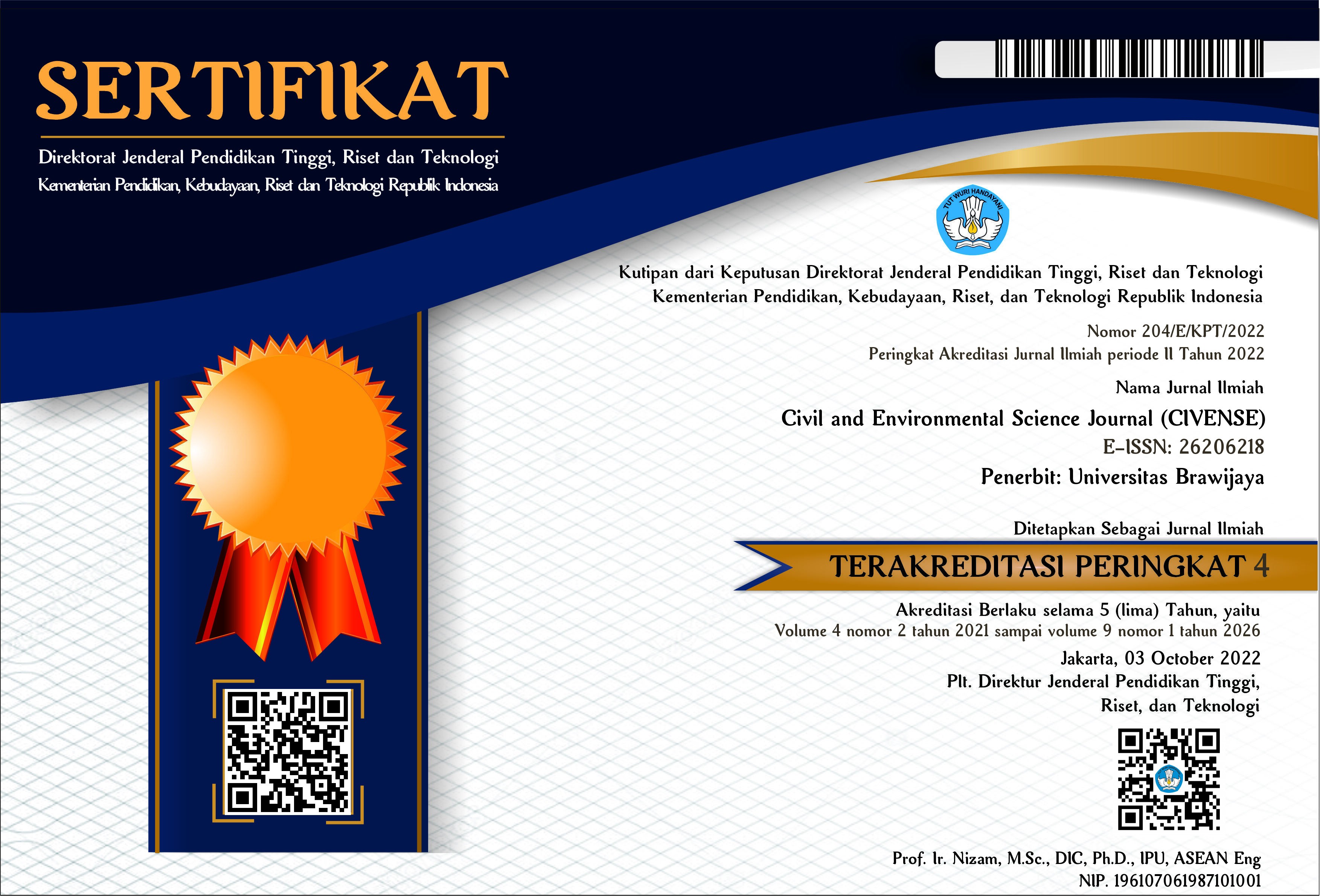Application of Polynomial Rocking Bearings as Seismic Isolation System on Irregular Bridges
DOI:
https://doi.org/10.21776/ub.civense.2018.00101.1Keywords:
irregular bridges, near-fault earthquakes, polynomial rocking bearing, variable isolation stiffnessAbstract
Friction Pendulum System (FPS) is one of the conventional sliding isolators which widely used and effectively proved to reduce seismic hazard in far-fault earthquakes. However, it may not be effective when the structures are induced by near-fault earthquakes because the earthquake's period is usually close to the isolation period. In this study, a Polynomial Rocking Bearing (PRB) which has variable isolation stiffness is used to improve the performance of seismic isolation systems applied on irregular bridges under near-fault earthquakes. The PRB is composed by an articular joint and concave rocking surface. The rocking surface is defined by a sixth-order polynomial function. Based on previous studies, the PRB has been verified to effectively suppress the large isolator displacement subjected to near-fault earthquakes on building and regular bridges. However, it has not been used yet in the irregular bridges. This study aims to analyze the behaviour of Polynomial Rocking Bearing installed on an irregular bridge. As compared with Friction Pendulum Systems (FPS), the performance of PRBs is much better to effectively suppress the displacement of the bridge deck in both near and far-fault earthquakes.
References
Asher, J. W., Hoskere, S. N., Ewing, R. D., Van Volkinburg, D. R., Mayes, R. L., and Button, M. (1995). Seismic performance of the base isolated USC University Hospital in the 1994 Northridge earthquake. ASME-PUBLICATIONS-PVP, 319, 147-154.
Bozorgnia, Y., Mahin, S. A., and Brady, A. G. (1998). Vertical response of twelve structures recorded during the Northridge earthquake. Earthquake Spectra, 14(3), 411-432.
Çelebi, M. (1996). Successful performance of a base isolated hospital building during the 17 January 1994 Northridge earthquake. The Structural Design of Tall and Special Buildings, 5(2), 95-109.
Fujita, T. (1998). Seismic isolation of civil buildings in Japan. Progress in Structural Engineering and Materials, 1(3), 295-300.
Kelly, J. M. (1986). Aseismic base isolation: review and bibliography. Soil Dynamics and Earthquake Engineering, 5(4), 202-216.
Kelly, J. M. (1998). Seismic isolation of civil buildings in the USA. Progress in Structural Engineering and Materials, 1(3), 279-285.
Koh, C. G., and Kelly, J. M. (1988). A simple mechanical model for elastomeric bearings used in base isolation. International journal of mechanical sciences, 30(12), 933-943.
Lu, L. Y., and Hsu, C. C. (2013). Experimental study of variable-frequency rocking bearings for near-fault seismic isolation. Engineering structures, 46, 116-129.
Martelli, A., and Forni, M. (1998).Seismic isolation of civil buildings in Europe. Progress in structural engineering and materials, 1(3), 286-294.
Matsagar, V. A., and Jangid, R. S. (2006).Seismic response of simply supported base-isolated bridge with different isolators. International Journal of Applied Science and Engineering, 4(1), 53-69.
Naeim, F., and Kelly, J. M. (1999). Design of seismic isolated structures: from theory to practice. John Wiley & Sons.
Downloads
Published
How to Cite
Issue
Section
License
Copyright (c) 2018 Civil and Environmental Science Journal

This work is licensed under a Creative Commons Attribution-NonCommercial 4.0 International License.
Authors who publish with this journal agree to the following terms:
Authors retain copyright and grant the journal right of first publication with the work simultaneously licensed under a Attribution-NonCommercial 4.0 International License that allows others to share the work with an acknowledgement of the work's authorship and initial publication in this journal.
Authors are able to enter into separate, additional contractual arrangements for the non-exclusive distribution of the journal's published version of the work (e.g., post it to an institutional repository or publish it in a book), with an acknowledgement of its initial publication in this journal.
Authors are permitted and encouraged to post their work online (e.g., in institutional repositories or on their website) prior to and during the submission process, as it can lead to productive exchanges, as well as earlier and greater citation of published work (See the Effect of Open Access).














